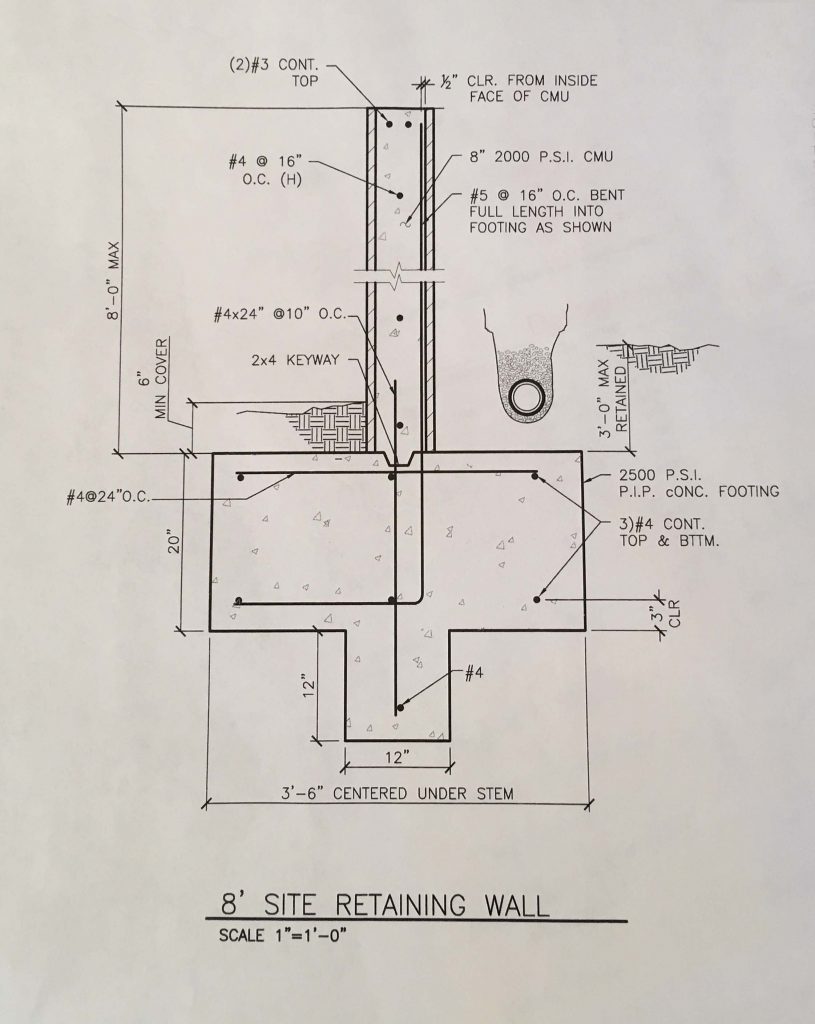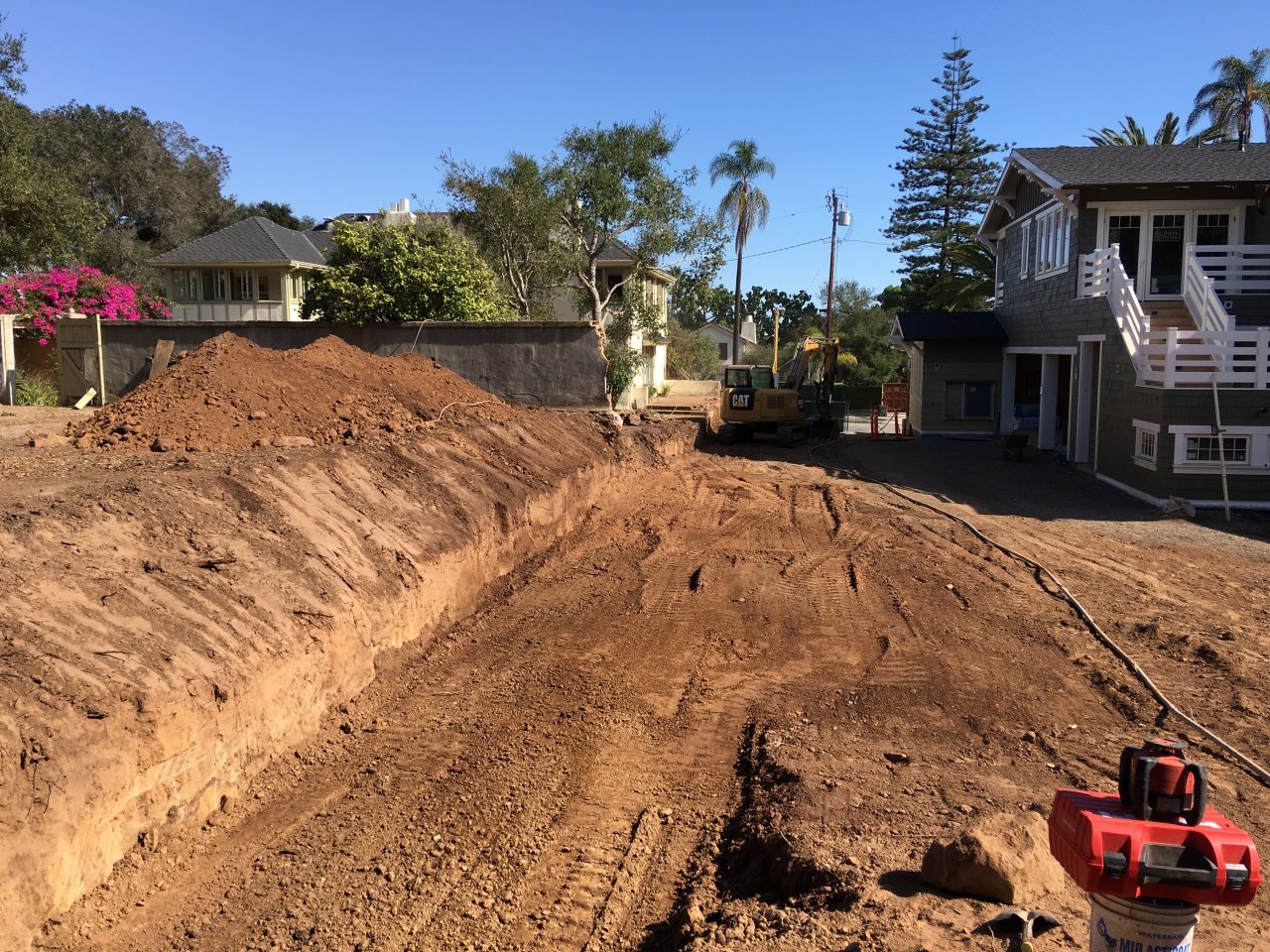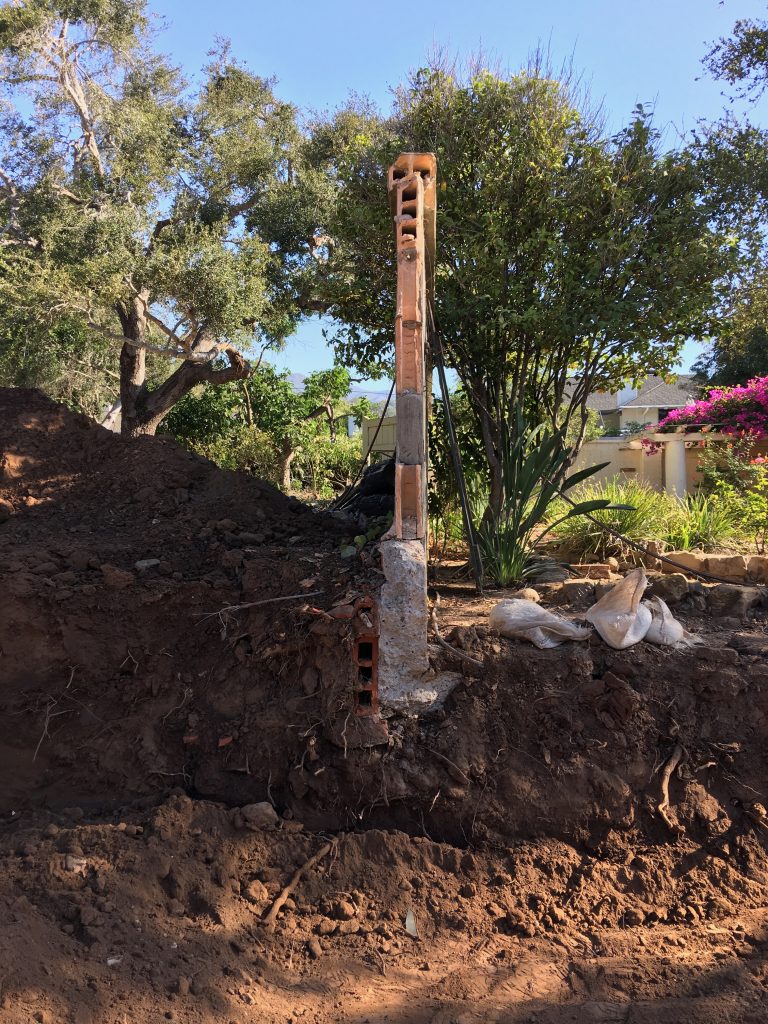Take a look at this cross section of our wall structure from our structural engineer.

Like most everything in our house, and that is requited by code, this new wall that we are building along our property line with our neighbors will be veritably bomb-proof. And it needs to be pretty beefy as in addition to being a privacy wall, it is a retaining wall, which in some places retains considerable amounts of dirt. Here is the path along which the new wall will go; you can see the extent of the excavation we’ve done.

But, this interesting shot of a probably 80 year old wall on our neighbors property, and the deconstruction of the old wall on our property, makes you wonder if we are overbuilding.

That wall has a minimal footing, is retaining two feet of dirt, has no re-bar between the footing and the wall, and no re-bar or mortar tying the wall blocks together either vertically or horizontally. And yet, it has stood there for 80 or so years.
Perhaps it is just luck, and in another 5 or 10 years something would happen that would cause the wall to fail. I would imagine that our new wall will cost 3-4 times what it would if we built it like the old walls.
Don’t get me wrong, I wouldn’t want to build a new wall that way. But perhaps there is some in-between version that is more secure than the old walls and what is required now, and costs half as much.
In the news quite a bit over the last 5 years is the poor state of the infrastructure in the US and how much we need to spend to bring it all up to current safety standards. For one metric, consider the San Francisco Bay Bridge, which took three years to build originally, completed in 1936, and cost $1.3 billion in today’s dollars. It had no issues until more than 50 years later when a portion failed during the 1989 (World Series) earthquake. After that, it took 25 years and cost $6.5 billion just to replace the eastern span of the bridge.
There is a lot of talk in California about the fact that housing supply has not kept up with the growth of the state’s population. Perhaps the over-engineering required by today’s building codes has something to do with it.